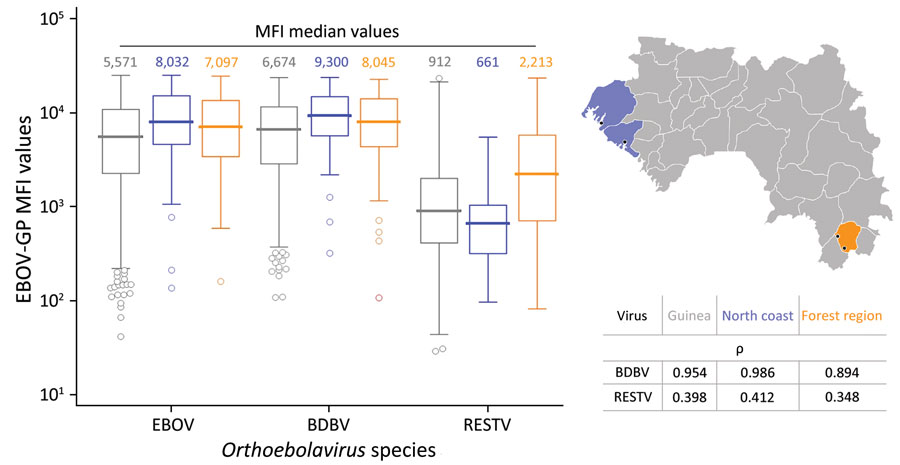Volume 30, Number 4—April 2024
Research
Geographic Disparities in Domestic Pig Population Exposure to Ebola Viruses, Guinea, 2017–2019
Figure 2

Figure 2. Pig serum samples tested by multiplex microsphere immunoassay against GP recombinant proteins of different Orthoebolavirus species in study of geographic disparity in domestic pig population exposure to Ebola viruses, Guinea, 2017–2019. MFI values of pig serum against EBOV, BDBV, and RESTV-GPs are shown for all testing sites in Guinea (gray), the northern coast (blue), and the Forest Guinea (orange), corresponding to locations on the map at right. Table outlines the Spearman coefficient of rank correlation (ρ) values between the species EBOV and each of the 2 species BDBV and RESTV. The associated p value was <0.0001 in all cases. Black dots on map indicate study location as detailed in Figure 3. BDBV, Bundibugyo virus; EBOV, Zaire Ebola virus; GP, glycoprotein; MFI, mean fluorescence intensities; RESTV, Reston virus.